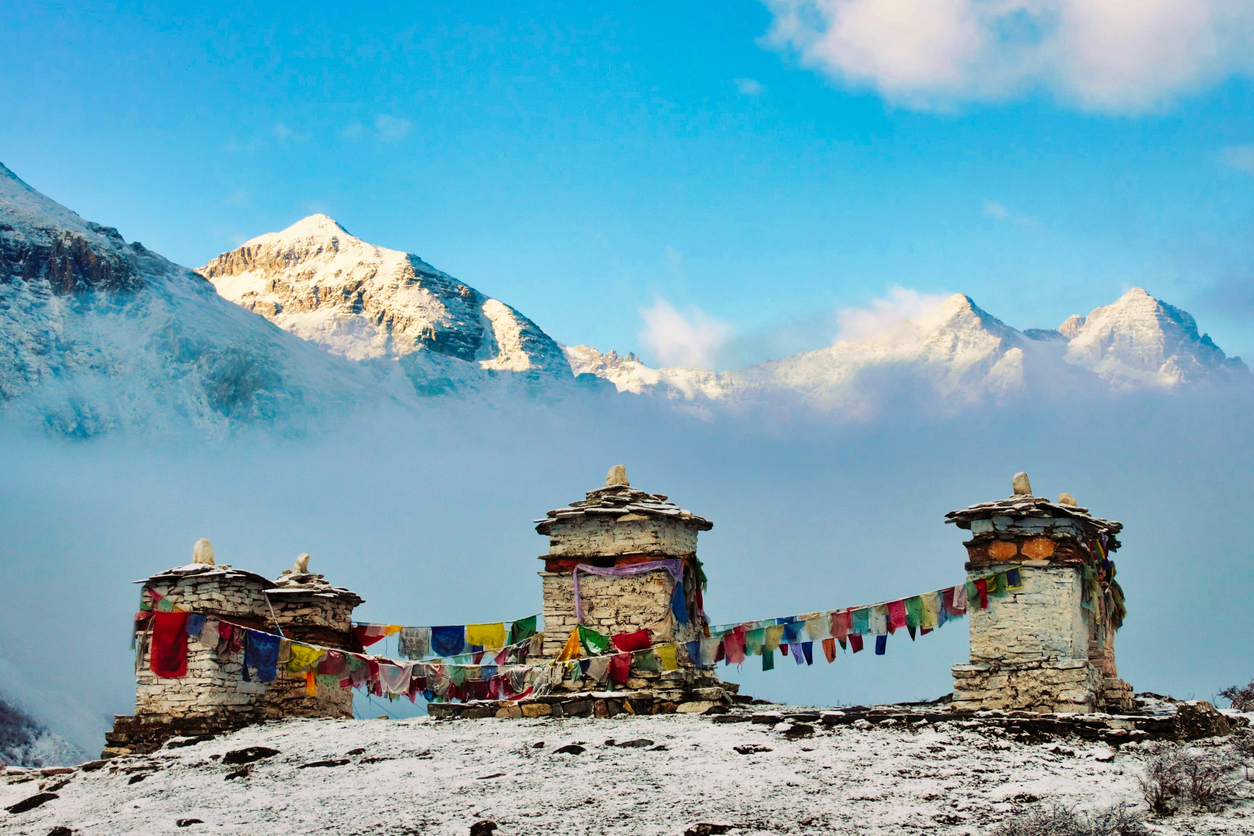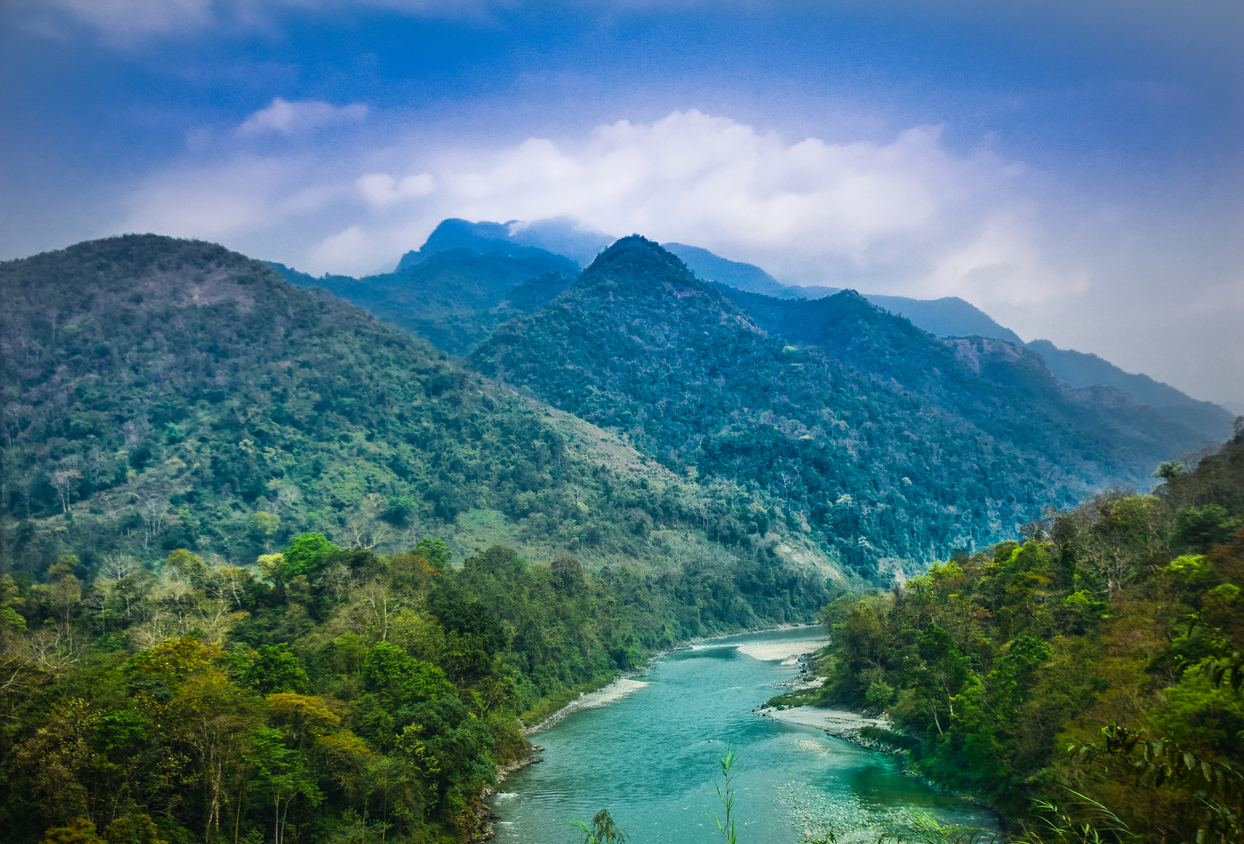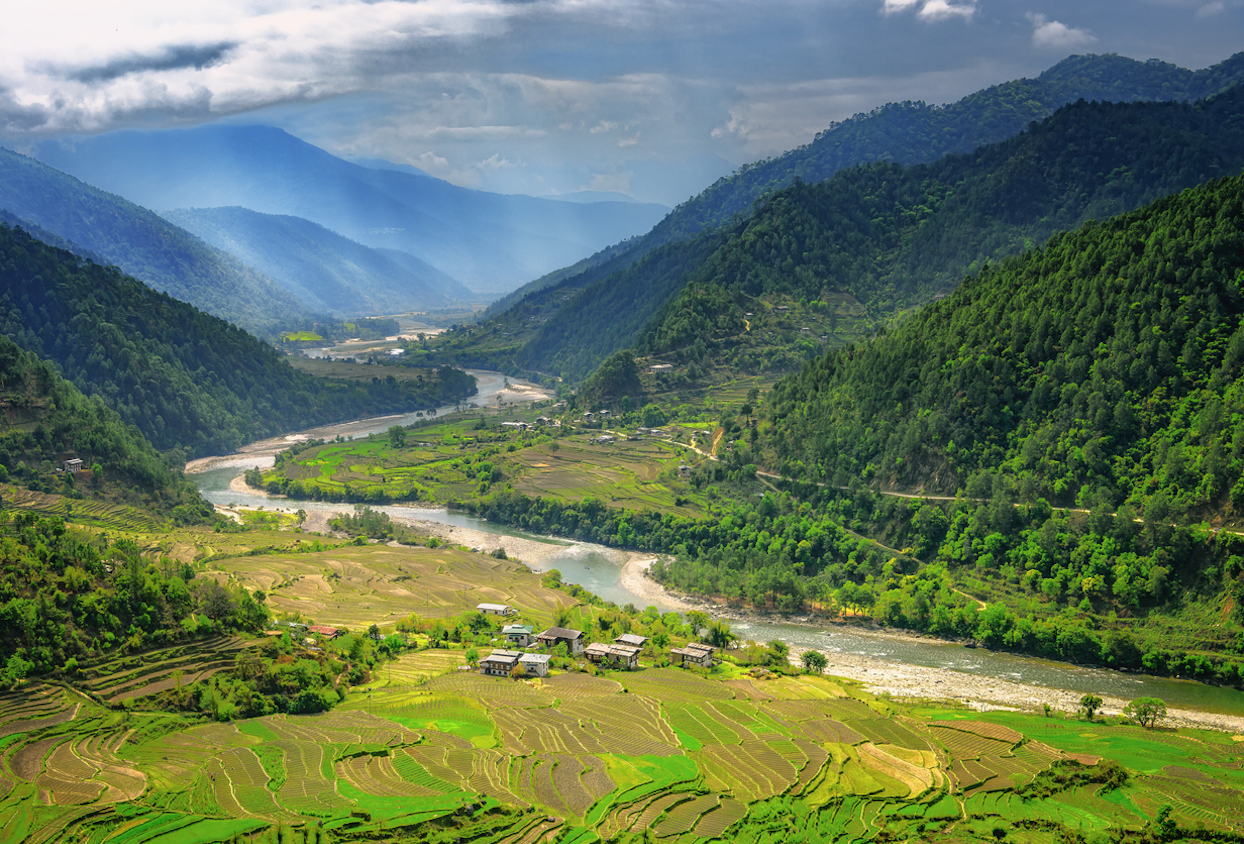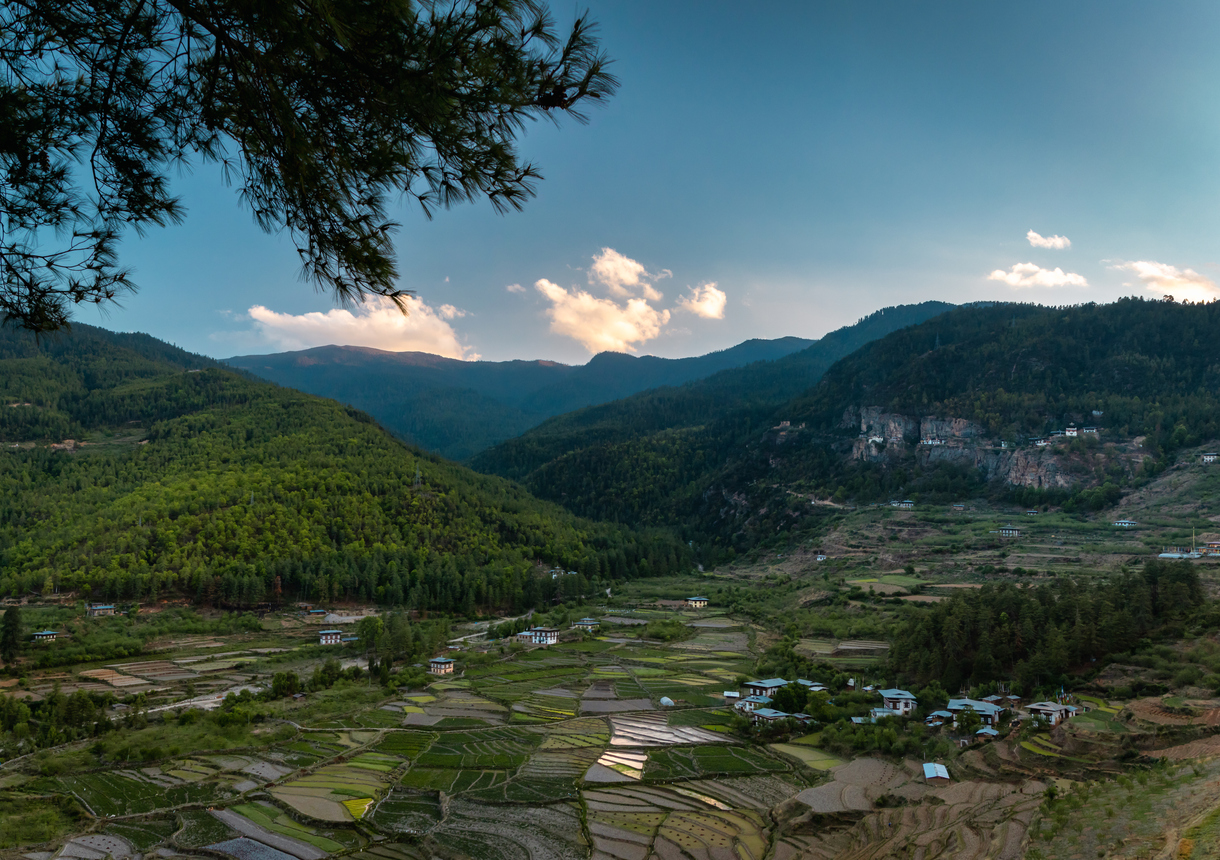
Bhutan
April 19- 27, 2026
Overview
INCLUDES
itinerary
Gallery
Overview
Includes
- Accommodations- 6 night in hotel
- Airport Transfers: All airport transfers
- Visa: Entry Visa to Bhutan
- Government Fee: Government Royalty Fee
- Local English Speaking Guides
- Food & Drink as listed in itinerary
- Entrance Fees: Monument and monastery entrance fee
- Airfare: International airfares and transit visas to and from
- Travel Insurance - REQUIRED ITEM- Not included
- Personal items
- Beverages: Non-alcoholic and alcoholic beverages
Bhutan Itinerary
*subject to change
April 19 - Day 1
Arrive in Paro – Drive to Thimphu
Visa approval formalities should be straightforward. Please make sure you have the visa confirmation we email to you in your hand luggage, as you will need to show this at Immigration. When you collect your bags you need to make sure you have your airline baggage tags handy as they check these off against the flight tags on your luggage before you can leave. You will be given a baggage declaration form to complete, this is to ensure that you re – export all items that have arrived with you. Once you have cleared immigration and collected your luggage, make your way to the main doors. Your guide will be outside these doors, holding sign.
April 20th - Day 2
Hike and Visit Nunnery
Morning hike to Wagdushey 2hrs leisure hike overlooking Thimphu – spend some time visiting the temple at Wagdutshey.
Coming back visit Takin Center, then lunch at Folk Heritage Restaurant
After lunch visit 13 Art School, Paper factory and later afternoon around 4pm visit Zhilukha Nunnery for prayer (Nun will bless your prayer flag)
Option of Tibetan Kuney Massage after the Nunnery around 6pm
April 21st - Day 3
Tango Monastery
Drive and hike 2hrs to Tango Monastery in the morning – hoist your blessed prayer in Tango
Walk back and enjoy your picnic lunch beside the River
Drive back – enroute visit Choki Traditional Art School
Visit the Pangri Zampa Lhakhang – The College of Astrology – read your Palm
April 22nd - Day 4
Punakha Valley
Before sunrise – drive to Buddha Statue Point for sunrise – back to hotel for breakfast
After breakfast, visit the Green Weaving Center (GWC), visit Cottage & Small Industry Market (CSI) – then lunch in Thimphu
2.5hrs Drive over Dochu La Pass and into Punakha valley
Visit the Fertility Temple in Punakha Valley – drive to Punakha – stay in a Boutique homestay
Evening enjoy cooking with the host from the Homestay
April 23rd - Day 5
Punakha Dzong
Morning hike to Khamsum Yulley Chorten 2hrs round trip – enjoy an early lunch in the village – before driving to Punakha Dzong
Drive to Punakha Dzong – enjoy the tour inside the Dzong
Drive back to the Hotel – refreshen up – late afternoon a yoga session
Dinner
April 24th - Day 6
Drive to Paro- Ringpung Dzong
After breakfast, around 10am – drive back to Paro (3hrs) – Archery Experience
Walk in the main town of Paro – lunch at a local restaurant
Visit the Ringpung Dzong (Paro Dzong) & National Museum of Bhutan
April 25th - Day 7
Tigers Nest Hike
April 26th - Day 8
Drakarpo Monastery
After breakfast, drive to the base of Drakarpo Monastery round trip 2 – 2.5hrs
Early lunch at Namgyal Brewery – taste some local Bhutanese beer
After lunch – drive to visit Kyichu Lakhang
Return back to hotel
April 27th - Day 9
Departure from Paro
Travel insurance
Travel insurance is designed to help cover your expenses if something goes wrong on your trip, and fill any gaps that wouldn’t be covered by your primary health insurance or other insurance you may have. It’s not meant to be a substitute for health insurance and won’t cover non-essential overseas medical treatment, such as routine exams.
Address
MORE Adventures
1627 W. Main 257
Bozeman MT 59715
United States







